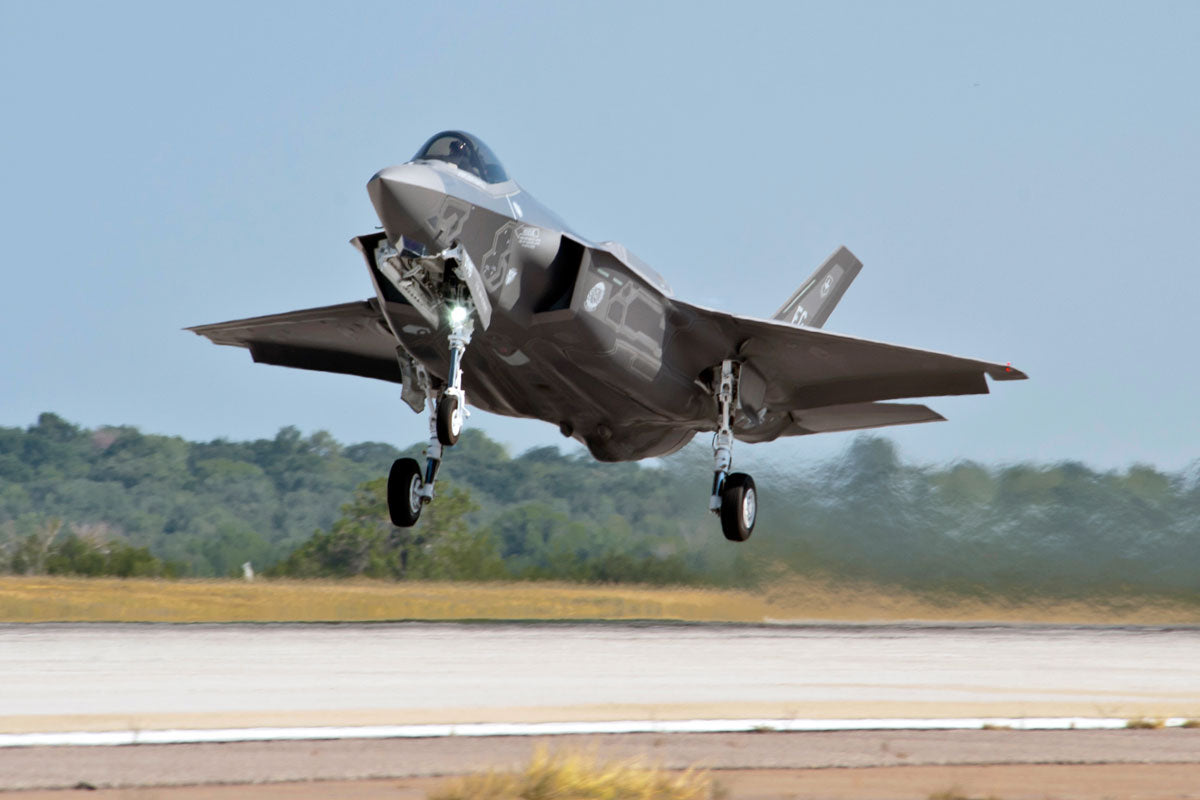F-35 Lightning II: The Future of Air Superiority

In the world of military aviation, the F-35 Lightning II stands as a testament to cutting-edge technology, innovation, and the pursuit of air superiority. This advanced multirole fighter aircraft, often referred to as the "Joint Strike Fighter," represents a new era in combat aviation. In this blog, we will explore the remarkable capabilities and significance of the F-35 Lightning II.
A New Breed of Fighter
The F-35 Lightning II is a family of fifth-generation stealth fighter jets developed by Lockheed Martin. It was designed to serve a wide range of roles across different branches of the U.S. military and allied nations. The F-35 program includes three distinct variants:
1. F-35A (Conventional Takeoff and Landing - CTOL): This variant is designed for the U.S. Air Force and features conventional takeoff and landing capabilities. It is the most versatile and widely deployed variant.
2. F-35B (Short Takeoff and Vertical Landing - STOVL): Developed for the U.S. Marine Corps, the F-35B can take off and land vertically, making it suitable for operation from short runways and amphibious assault ships.
3. F-35C (Carrier-Based): The F-35C variant is tailored for carrier-based operations and is equipped with larger wings and enhanced landing gear to accommodate catapult launches and arrested landings on aircraft carriers.
Stealth and Supercruise
One of the most defining features of the F-35 Lightning II is its stealth technology. The aircraft's design minimizes radar cross-section, making it difficult for enemy radar systems to detect and track. This stealth capability is complemented by supersonic cruise speed, known as "supercruise," which allows the F-35 to sustain supersonic flight without using afterburners, conserving fuel and reducing infrared signature.
Multirole Capabilities
The F-35 Lightning II is not just a stealth fighter; it's a true multirole aircraft, capable of performing a wide range of missions, including:
- Air-to-Air Combat: The F-35 can engage enemy aircraft in dogfights, leveraging its stealth and advanced avionics to gain the upper hand in aerial battles.
- Air-to-Ground Strike: With precision-guided munitions and advanced targeting systems, the F-35 can conduct surgical strikes against ground targets, including armored vehicles and fortified positions.
- Electronic Warfare: The aircraft is equipped with electronic warfare capabilities, allowing it to disrupt enemy radar and communication systems.
- Intelligence, Surveillance, and Reconnaissance (ISR): The F-35 can gather valuable intelligence through sensors and data-sharing, enhancing situational awareness for both the pilot and ground forces.
Global Partnership
The F-35 Lightning II program is a collaborative effort involving multiple countries, including the United States, the United Kingdom, Italy, the Netherlands, Australia, and many others. This international partnership reflects the global interest in acquiring this state-of-the-art fighter and ensures interoperability among allied forces.
Challenges and Achievements
The development of the F-35 program has faced its share of challenges, including cost overruns and technical issues. However, it has also achieved significant milestones, with thousands of F-35s delivered to various countries, and continuous updates and improvements to address initial concerns.
F-35 Lightning II - A New Horizon in Air Power
The F-35 Lightning II represents a leap forward in military aviation, combining stealth, multirole capabilities, and international collaboration. As it continues to evolve and adapt to the changing landscape of modern warfare, it stands as a symbol of human ingenuity and the relentless pursuit of air superiority. The F-35 Lightning II is not just an aircraft; it's a glimpse into the future of aerial warfare, where innovation and technology redefine the boundaries of what is possible in the skies.
